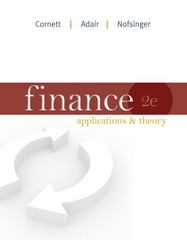Question
1. Stacie and Ryan are married and file jointly for the 2020 tax year. They have two sons. Their sons are age 10 and 14.
1. Stacie and Ryan are married and file jointly for the 2020 tax year. They have two sons. Their sons are age 10 and 14. Stacie and Ryans wages in total for the year was $133,000. Their employers withheld $18,000 in tax from their wages. In addition to the above, the following occurred the tax year:
- They moved several states away because of career relocation for Ryan. Their unreimbursed moving costs were $10,000.
- Stacie and Ryan pay $3,500 of the interest on a loan Ryans postsecondary education.
- They paid $2,000 in medical insurance premiums for the year. In addition, they paid $1,000 for hospital stay after an emergency room trip for Stacie.
- The couple paid $250 for an accountant to prepare their taxes.
- Their accountant calculates that their total state income tax liability is $4,000. The couple pay all their state taxes for the year.
- Determine Stacie and Ryans AGI. (6 points)
$133,000 - $2500 = $130,500
- Ignore your answer in a). Assume that Stacie and Ryans AGI for the year is $120,600. Determine the amount of itemized deduction Stacie and Ryan have available this year. (7 points)
- Ignore your answer in b). Assume that the amount of itemized deduction available is $7,500. Using the 2020 standard deduction amounts (assuming no additional amounts for age or blindness) from Appendix D in your book, first determine whether Stacie and Ryan itemize or take the standard deduction. If you determine they itemize, write in the itemized deduction dollar amount given ($7,500). Alternatively, if you determine they will take the standard deduction, write in the standard deduction amount for which they qualify (tied to the appropriate filing status). (6 points)
- Ignore your answer in a) - c). Assume that Stacie and Ryans taxable income is $163,250 and their employer withheld $18,000 in tax from their wages. Using the tax rate schedule from Appendix D in your book, determine the amount of taxes due or the amount of refund due. Remember to clearly mark the answer as either the amount of tax due or a refund due (e.g. refunds are negative amounts as represented with parentheses or a negative sign). Assume AMT does not apply, and there are no tax credits available. (6 points)
2. Shela is single and works for a law firm. In the 2020 tax year, she made $110,000 this year in salary and $10,000 of gross interest income from a corporate bond. Her law firm withheld $16,000 of tax from her salary this year. In addition to the above, the following occurred this year:
- She paid $7,000 in interest on her mortgage for her primary residence.
- She had a rental loss (had greater expenses as a landlord than revenue) by $2,000.
- She sold stock she had held for 9 months at $4,000 less than her tax basis at the time of the sale.
- Shela owned a 20% interest in a partnership during the year. The partnership had a $20,000 loss from operations during the year and made no distributions.
- Shela volunteers for the Red Cross using her legal skills to do administrative work for the charity. She estimates her time volunteering is worth $5,000.
- Determine Shelas AGI. (6 points)
- Ignore your answer in a). Assume that Shelas AGI in 2020 is $148,380. Determine the amount of itemized deduction Shela has available this year. (7 points)
- Ignore your answer in b). Assume that the amount of itemized deduction available is $13,665. Using the 2020 standard deduction amounts (assuming no additional amounts for age or blindness) from Appendix D in your book, first determine whether Shela will itemize or take the standard deduction. If you determine she itemizes, write in the itemized deduction dollar amount given ($13,665). Alternatively, if you determine she will take the standard deduction, write in the standard deduction amount for which she qualifies (tied to the appropriate filing status). (6 points)
- Ignore your answer in a) - c). Assume that Shelas taxable income is $136,970 and her employer withheld $16,000 in tax from their wages. Using the tax rate schedule from Appendix D in your book, determine the amount of taxes due or the amount of refund due. Remember to clearly mark the answer as either the amount of tax due or a refund due (e.g. refunds are negative amounts as represented with parentheses or a negative sign). Assume AMT does not apply, and there are no tax credits available. (6 points)
| For Single Individuals, Taxable Income Over | For Married Individuals Filing Joint Returns, Taxable Income Over | For Heads of Households, Taxable Income Over | |
|---|---|---|---|
| 10% | $0 | $0 | $0 |
| 12% | $9,875 | $19,750 | $14,100 |
| 22% | $40,125 | $80,250 | $53,700 |
| 24% | $85,525 | $171,050 | $85,500 |
| 32% | $163,300 | $326,600 | $163,300 |
| 35% | $207,350 | $414,700 | $207,350 |
| 37% | $518,400 | $622,050 | $518,400 |
Step by Step Solution
There are 3 Steps involved in it
Step: 1

Get Instant Access to Expert-Tailored Solutions
See step-by-step solutions with expert insights and AI powered tools for academic success
Step: 2

Step: 3

Ace Your Homework with AI
Get the answers you need in no time with our AI-driven, step-by-step assistance
Get Started


